Ingrid Schaffner, curator of the 57th Carnegie International, announces in the exhibition’s accompanying book that “The aim of this International is simply to inspire museum joy.” She continues: “The pleasure of museums comes from the commotion of being with art and other people actively engaged in the creative work of interpretation.”
The problem with “museum joy” in our present moment is that the museum is not, itself, a rapturous space; it’s a conflict zone. While I was writing this review, gilets jaunes shattered the windows of the Jeu de Paume Gallery in Paris’s Tuileries Garden during a protest, and activists occupied the Egyptian section of The Brooklyn Museum, seeking reparation for and repatriation of the spoils of colonialism. Various factions, including board members with far-right political ties, beleaguered progressive curators, anti-gentrification protestors, decolonization advocates, and Instagram-exhausted traditionalists, all jostle to shape the museum in the still-emergent twenty-first century.
Against this backdrop, joy is a tough quality to evince. Ultimately, only a few works by the Carnegie International’s 32 artists and collectives succeed. The best of these do so while simultaneously addressing the contested space in which they exist.
Similarly, the exhibition immediately confronts and challenges the viewer with a collaboration between Ulrike Müller and Sarah Crowner, each taking the side of a large freestanding wall set directly in front of the glass entrance doors. This arresting central placement demands audience attention; in fact, it blocks other work. It argues, like El Anatsui’s commission, that joy evolves from the spectacle of form, scale, and encompassment. The only sightline if offers to subsequent works is a rectangular, door-shaped hole that Müller has cut through the black-painted surface of the wall’s entrance side. On the reverse, the rectangle interrupts Crowner’s wall-covering painting, Sliced Tropics (2018), a collage of curved geometric-but-organic canvas swaths that recall tropical plant leaves. Crowner is a skilled painter, and the painting is splendidly lush without tipping to excess; still, the choice of making a formalist piece so prominent pegs an exhibition about the museum experience as critically neutral.

Ulrike Müller, “Wraps and Rugs (con zapatos),” 2018, 57th Carnegie International. Photo: Bryan Conley. Courtesy the artist and Callicoon Fine Arts, New York.
The final punctuation of the central exhibition corridor reinforces this awe of spectacle. Alex Da Corte’s kitschy glass-and-neon house installation may entertain, but it rings empty: with its glowing cupids and jack-o-lanterns, Rubber Pencil Devil (2018) offers colorful, child-like joy, ideal for the requisite family Instagram pit stop. However, visitors seeking greater depth than Disneyesque animation will likely find the jubilation quickly turn to frustration. Da Corte’s house functions as little more than a nostalgic theater for 57 videos of cartoon characters, ranging from Peter Pan to Bugs Bunny, which he interposes with a Mister Rogers narrative leitmotif.
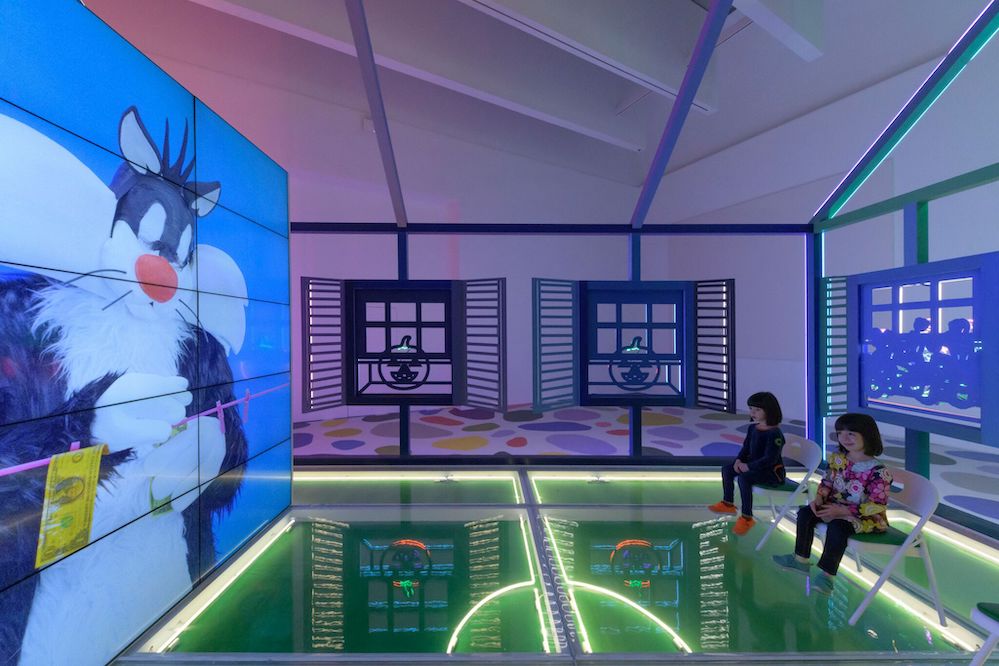
Alex Da Corte, “Rubber Pencil Devil,” 2018, 57th Carnegie International. Photo by Tom Little. Courtesy of the artist and Karma New York.
Choosing Rogers was Da Corte’s most significant decision, at least contextually. Mister Rogers’ Neighbourhood was filmed near the Carnegie. Additionally, his inclusion of 57 videos points to Heinz, a Pittsburgh company, famed for its 57 condiment varieties, and the coincidence that this exhibition is the 57th iteration of the International. The museum’s site forms an important subtheme of this Carnegie International. In truth, the show’s local specificity performs a necessary corrective to the historically problematic associations evoked by the “international” in the show’s title.
Highlighting Pittsburgh’s own history, Dig Where You Stand, curated by the Senegalese-based Koyo Kouoh, is an adjacent “show within a show” culled from the museum’s collection. The dense salon-style hanging of disparate works, ranging from a portrait of the museum’s founder Andrew Carnegie to a sculpture by Nam June Paik, gradually coheres to a theme of “coloniality” with the aid of graphics that map out its connections. One of Kouoh’s best discoveries is Charles “Teenie” Harris’s mid-twentieth century photographs documenting the public lives of Pittsburgh’s underrepresented African-American community. Alongside this photo series is a Wunderkammer of reverberating museum objects – a sculptural elephant’s molar, for instance. Kouoh’s intervention represents a tremendous payoff for Schaffner’s bold gamble in temporarily relinquishing curatorial power. Kouoh doesn’t avoid politics but engages visitors. She applies one of Rancière’s central prescriptives: a “politics of aesthetics” that views the aesthetics of art as politicized more by context of interpretation than by artistic intent. This is well-illustrated by Kouoh’s juxtapositions: high Modernist pieces by Tony Cragg, for instance, made with little or no political motivation stand alongside the challenge to neutrality implicit in the Guerilla Girls’ Estrogen Bomb (2012), an imaginary revolutionary weapon for fixing institutional gender imbalance.
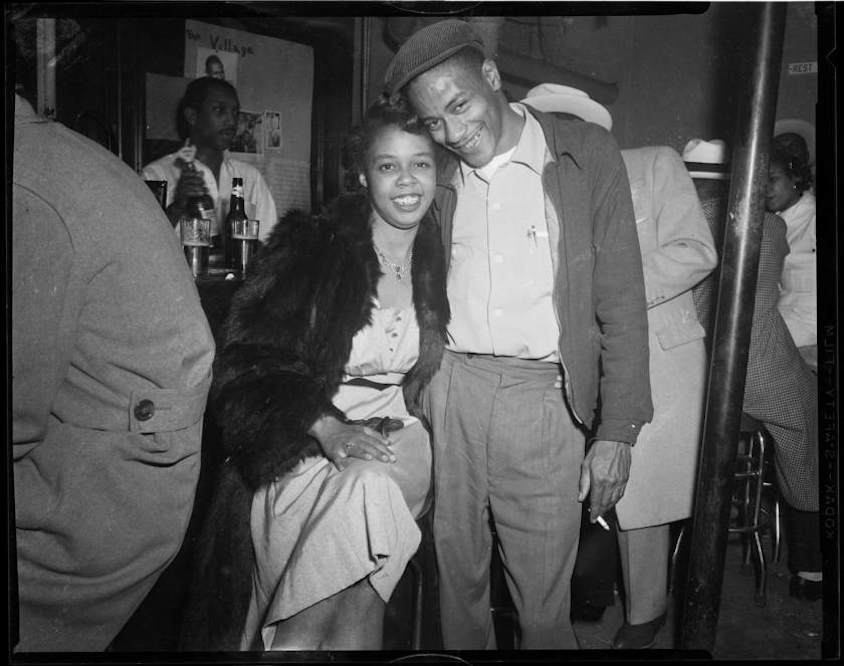
Charles “Teenie” Harris, “Man and woman in fur coat at bar,” c. 1947-60. Courtesy Carnegie Museum of Art.
Kouoh imbues formalism with agency. But the rest of the Carnegie International’s approach to formalism can feel like soma, merely calming our anxious desire for real action. For instance, Zoe Leonard’s Prologue: El Rio/The River (2018) circles the balcony of the Hall of Sculpture, the Neo-Classical core to the Modernist shell of the Carnegie, with a sumptuous suite of 71 photos picturing the Rio Grande’s mud flats. These hazily denote the travesty of the current Mexico-US border, but render it peaceful and meditative, their serial repetition faded to political inertia. This may well be the point, but the series sits palely against photojournalists’ recent documentation of tear-gassed migrant children at this same border.
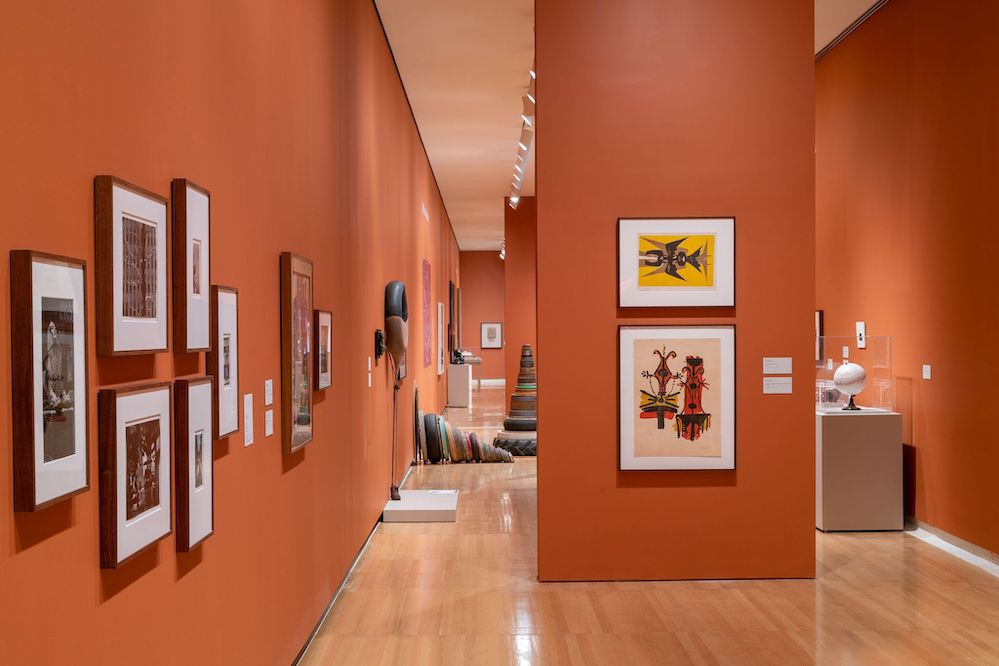
“Dig Where You Stand,” part of the Carnegie International at Carnegie Museum of Art, October 13, 2018–March 25, 2019.
In contrast, Smoke and Tangled Waters, We Carried Fire Home (2018), a sprawling, winding, wandering installation by the American Indigenous collective Postcommodity, does not dilute politics despite its wide reach. Initially inspired by the ephemeral sand paintings of the Navajo, which gradually blow away into their vast desert environment, this temporary installation of rusty scrap metal, glass, and coal evokes Pittsburgh’s industrial history, one inextricably tied to the museum and its founder, steel-magnate Andrew Carnegie. Postcommodity’s extensive research links the seemingly discrete histories of the steel industry in Pittsburgh and the local jazz community, discovering that black steel workers, who suffered especially harsh conditions to amass Carnegie’s and other mill owners’ immense wealth, were instrumental in the industry’s unionization in the ‘30s and key to the development of the city’s vibrant jazz scene. In tribute to this music history and in abstract response to the installation, which was intended to be a “graphic score,” local jazz musicians improvise on site four times weekly during the exhibition’s run. Joy meets decolonization in this, the exhibition’s strongest piece.
In Postcommodity’s installation and Kouoh’s outing I momentarily feel a sense of hope for the troubled twenty-first century museum. I am enraptured by the museum’s aesthetic, intellectual, and radical potential. Schnaffer’s direction risks dulling the pain of political struggle with wondrous beauty. In its best moments, though, the approach pays off: visual pleasure and necessary, difficult conversations complement one another without blunting their edge.

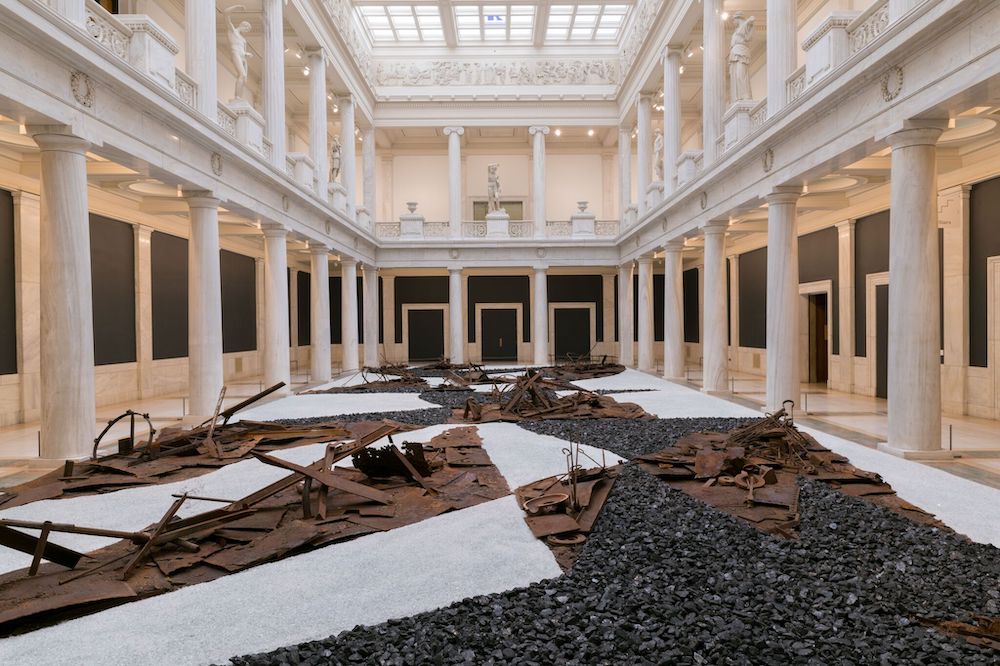























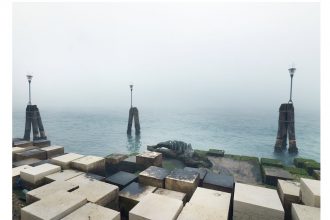
1 Comment